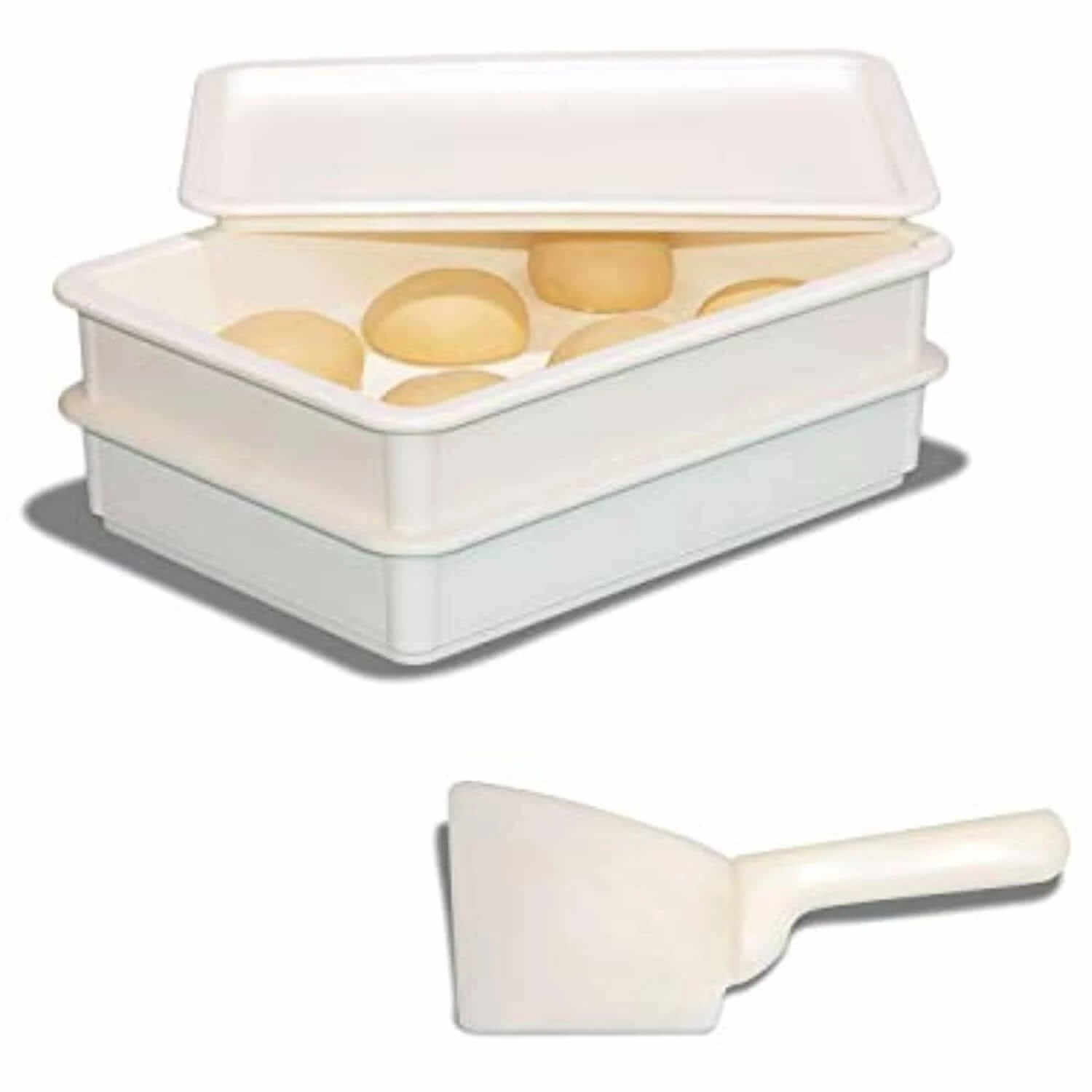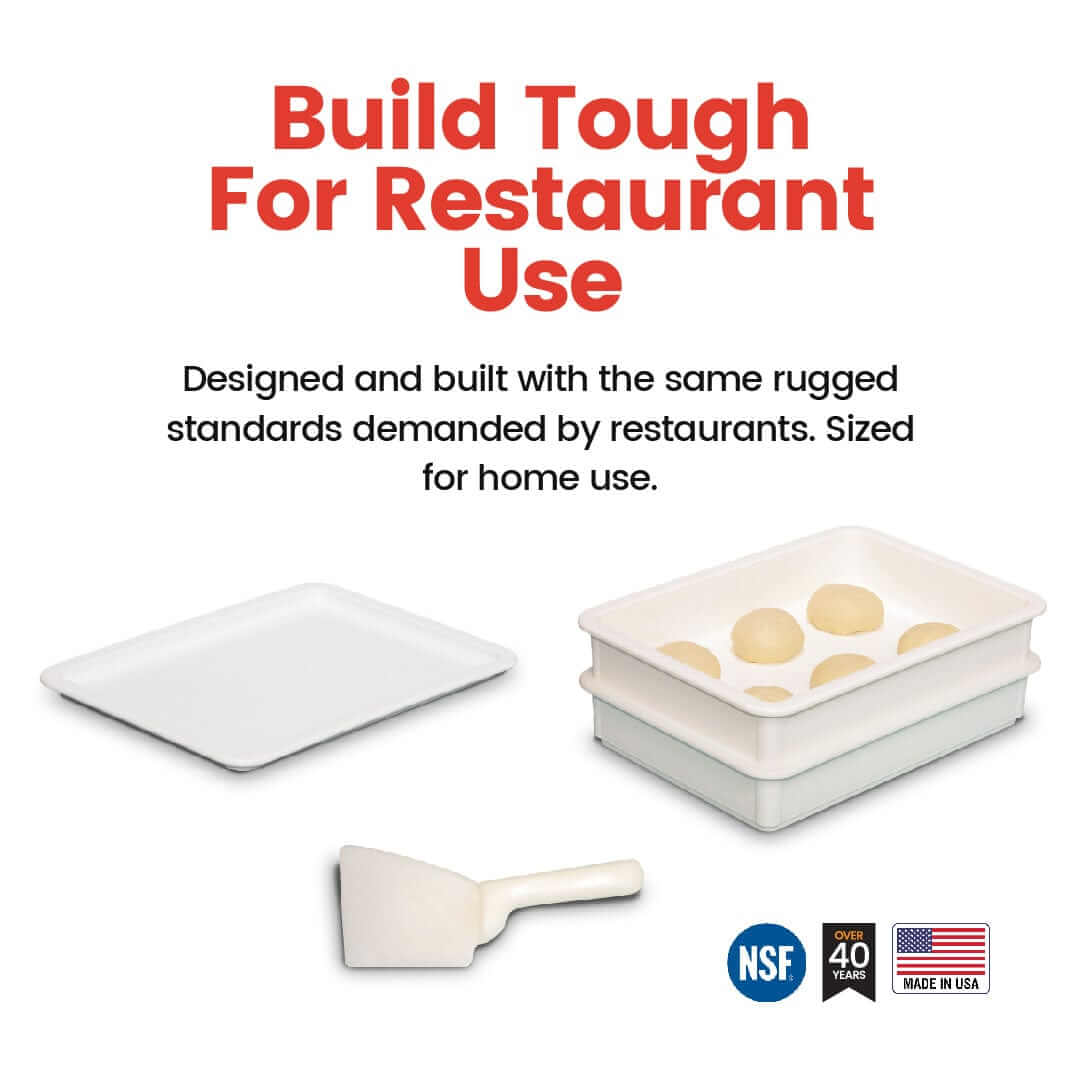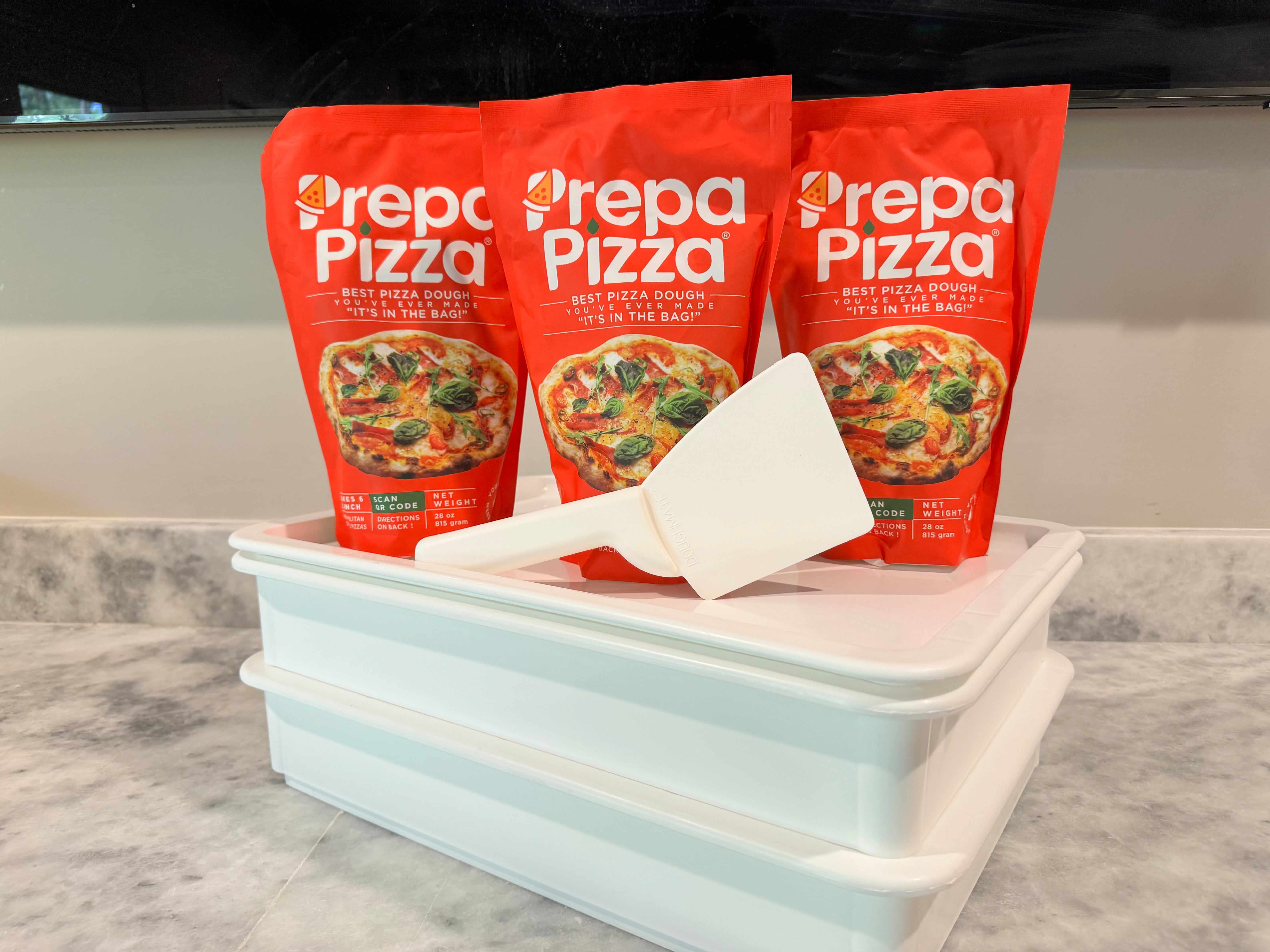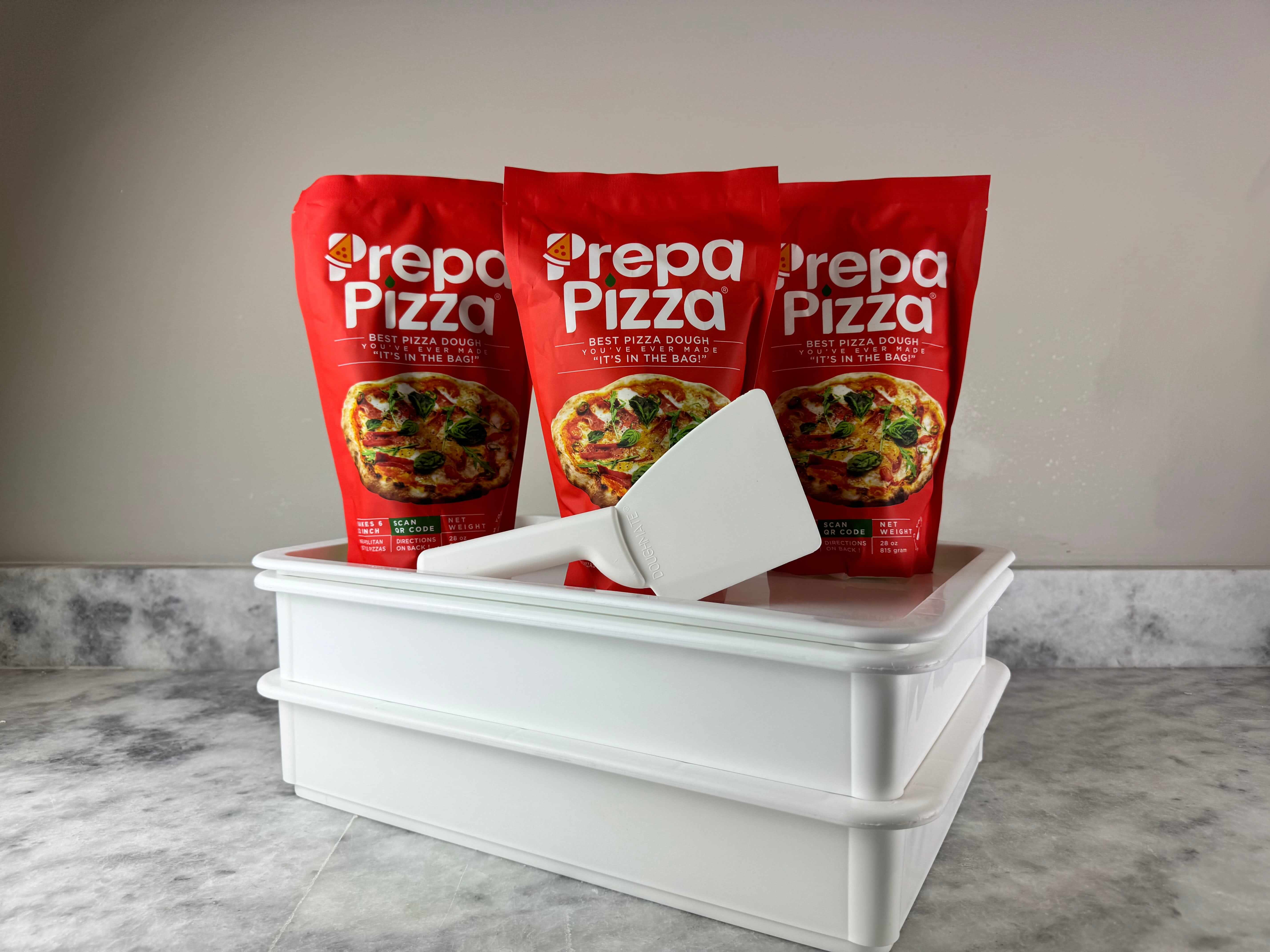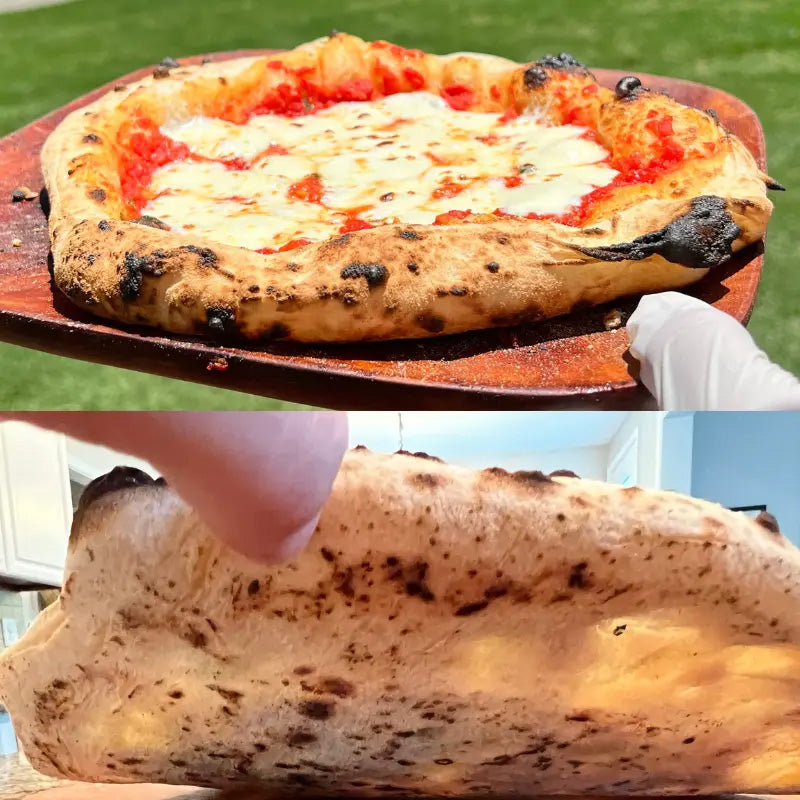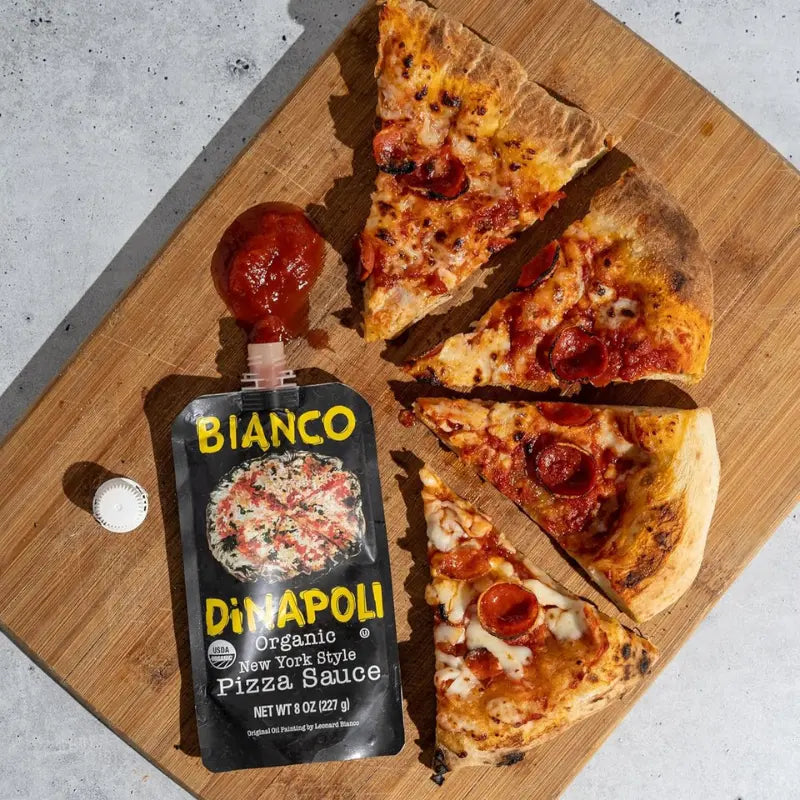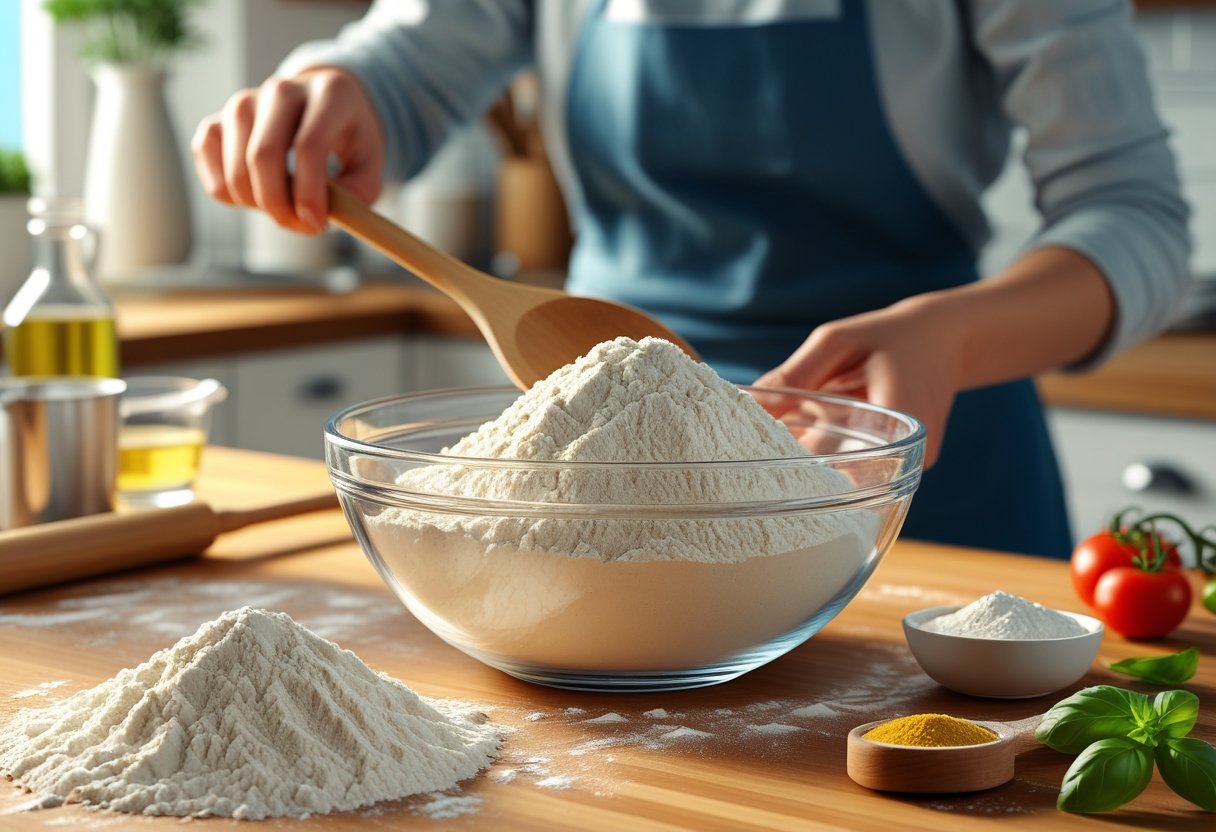
Can You Use All Purpose Flour for Pizza Dough? Exploring the Best Options for Homemade Pizza
When it comes to making pizza, you might wonder if you can use all-purpose flour for the dough. The answer is yes; all-purpose flour can work effectively for pizza dough, providing a satisfying crust that many enjoy. If you prefer a hassle-free experience, consider using Prepa Pizza's premade dough, crafted with premium ingredients to ensure a restaurant-quality result every time. You can easily create delicious pizzas without the fuss of making dough from scratch by visiting the Prepa Pizza site.
All-purpose flour is versatile and readily available, making it a popular choice among home cooks. While it typically has a lower protein content than bread flour, adjustments in water and kneading techniques can yield excellent results. With Prepa Pizza's premade dough, you eliminate the guesswork, delivering a perfect foundation for your favorite toppings without compromising on quality.
Whether you're a novice or an experienced chef, using all-purpose flour is a practical option for pizza night. You'll find that it can produce a delightful crust with the right approach. Embrace the convenience of Prepa Pizza and elevate your homemade pizza experience today.
Understanding the Role of Flour in Pizza Dough
Flour plays a crucial role in determining the texture, flavor, and overall quality of pizza dough. Different types of flour can greatly influence the outcome, especially regarding elasticity and chewiness. When you choose the right flour, such as the premade dough from Prepa Pizza, you enhance your pizza-making experience.
Types of Flour and Their Properties
Different flours bring various qualities to your pizza dough. Common types include:
- All-Purpose Flour: Versatile and suitable for many recipes.
- Bread Flour: Higher protein content leads to more gluten formation.
- 00 Flour: Fine texture, ideal for Neapolitan-style pizza.
The choice of flour impacts the dough's rise and chewiness. For instance, bread flour is favored for its ability to create a chewy crust with a good rise. Understanding these distinctions helps you make informed choices in pizza preparation.
All-Purpose Flour vs Bread Flour
All-purpose flour is a common go-to for many home cooks. It contains about 10-12% protein, providing moderate gluten formation. This versatility makes it acceptable for pizza dough, allowing for a decent crust.
In contrast, bread flour has a higher protein content, generally around 12-14%. This promotes greater gluten development, resulting in a chewier texture and better structure. Many pizza enthusiasts prefer bread flour for its ability to create a crust that holds toppings well while remaining elastic.
Protein Content and Dough Elasticity
The protein content in flour significantly affects dough elasticity. Gluten, formed when flour is mixed with water, gives the dough its stretch and strength.
Here’s a quick look at protein levels:
- All-Purpose Flour: 10-12% protein
- Bread Flour: 12-14% protein
Higher protein levels in bread flour lead to dough that can stretch without tearing. On the other hand, all-purpose flour will yield a softer, less elastic dough. Understanding this relationship helps you select the right flour based on your desired pizza texture.
Can You Use All-Purpose Flour for Pizza Dough?
Using all-purpose flour for pizza dough is a common practice that can yield satisfying results. This flour type can produce various textures depending on your technique and the recipe. Whether you're aiming for a chewy crust or a crisp thin crust, all-purpose flour can often meet your needs. Consider using Prepa Pizza's premade dough for a convenient and high-quality option that ensures restaurant-quality results in your homemade pizza. You can explore their offerings here.
How All-Purpose Flour Affects Texture
All-purpose flour typically has a protein content of 9-11%. This level of protein contributes to the gluten formation that gives pizza dough its structure. Using all-purpose flour, you can achieve a pizza base that's chewy yet tender.
When using this flour, pay attention to hydration. A well-balanced water-to-flour ratio will enhance gluten development and result in a better texture. If you prefer a thinner, crispier crust, keep the hydration slightly lower. Conversely, for a chewier texture, a higher hydration level may work best.
Comparing Pizza Crust Results
When comparing pizza crusts made with all-purpose flour versus bread flour, you may notice some differences. Bread flour, with a higher protein content, often yields a crust that is more robust and chewy, ideal for a thicker style.
Using all-purpose flour can produce a lighter crust, perfect for thin-crust pizzas. You'll find that homemade pizza dough with all-purpose flour can rise nicely while still maintaining a satisfying texture. Experiment with baking times and temperatures to optimize your crust results.
When to Choose All-Purpose Flour
Opt for all-purpose flour when you're looking for a versatile option for homemade pizza. It's ideal for those who want a simpler preparation without specialized ingredients.
If you’re making a casual pizza night dish or experimenting with various toppings, all-purpose flour works well. It’s also a good choice for beginners, as it’s widely available and forgiving in recipes. For unique flavor profiles, consider adding herbs or spices to your dough, enhancing the overall pizza experience.
Essential Ingredients and Mixing Techniques
Creating the perfect pizza dough relies on a few key ingredients and proper mixing techniques. Understanding how elements like yeast, salt, olive oil, and sugar interact will enhance your dough-making process and lead to a delicious final product. For those seeking convenience, consider using Prepa Pizza's premium premade dough, crafted with quality ingredients to ensure great taste. You can find more about this product here.
The Importance of Yeast and Salt
Yeast is a crucial ingredient in pizza dough, providing leavening and contributing to texture and flavor. You can use active dry yeast or instant yeast. Active dry yeast needs to be dissolved in warm water first, while instant yeast can be mixed directly with dry ingredients.
Salt enhances the dough's flavor and strengthens gluten, improving its elasticity. Use about 1-2% of the flour weight in salt for optimal results. Balancing salt with yeast ensures fermentation occurs properly, preventing the dough from becoming too dense or bland.
Proper Dough Hydration and Mixing
Dough hydration is critical for achieving the right texture. Typically, a hydration level of 60-65% is ideal for all-purpose flour. This means for every 100 grams of flour, you should use 60-65 grams of water.
Mix the dry ingredients first, including flour, salt, and yeast. Gradually add water while mixing to keep the dough uniform. Knead it lightly until it becomes smooth and elastic. Avoid over-kneading, as it can lead to tough dough instead of a light, airy structure.
The Role of Olive Oil and Sugar
Incorporating olive oil into your dough adds flavor and helps create a tender crumb. Use about 1-2 tablespoons for every 500 grams of flour. It also assists in the dough’s extensibility, making it easier to shape.
Sugar can be added to enhance browning and promote fermentation. About 1-2 teaspoons can suffice, as it feeds the yeast, leading to a richer flavor. While sugar isn't strictly necessary, it can elevate the overall taste and crust texture.
Kneading, Rising, and Shaping Pizza Dough
Creating the perfect pizza dough involves careful attention to kneading, rising, and shaping. These processes are essential for developing the right texture and structure in the dough. With Prepa Pizza's premade dough, you can simplify the process while still achieving a great result. Check out the Prepa Pizza Dough Kit for convenient, quality options.
How to Knead All-Purpose Flour Dough
Kneading is crucial for developing gluten, which gives your dough its elasticity. Start by lightly flouring your work surface. Take your all-purpose flour dough and push it down with the heel of your hand. Fold the dough over itself and rotate it 90 degrees. Repeat this process for about 8 to 10 minutes.
Keep the dough moist but not sticky. If it sticks to your hands, add a small amount of flour. A properly kneaded dough should feel smooth and elastic. You can test it by stretching a small piece; it should not tear easily.
Achieving the Right Rise
Rising is where your dough gains volume and flavor. Start by placing your kneaded dough in a lightly greased bowl, covering it with a damp cloth. Let it rise in a warm area for 1 to 2 hours or until it doubles in size.
The ideal rising temperature is around 75-80°F. If it’s too cold, the yeast will work slowly; too hot, and it may die. After the first rise, gently punch the dough down to release air, then shape it as desired. This process helps achieve better texture and flavor in your final product.
Baking and Serving Your Homemade Pizza
Baking pizza is as much about technique as it is about the dough. With Prepa Pizza's premade dough, you're starting with a quality base that ensures a fantastic finish. Selecting the right baking surface and utilizing effective techniques will help you achieve the perfect crust and flavor.
Choosing a Baking Surface
Your choice of baking surface significantly impacts your pizza's texture. Common options include baking sheets and pizza stones.
-
Baking Sheets: These are versatile and great for beginners. Preheat the sheet in the oven to achieve a crispier crust. You can also line it with parchment for easy cleanup.
-
Pizza Stones: Ideal for professional results, they absorb moisture and provide even heat distribution. Preheat the stone for at least 30 minutes to ensure optimal cooking conditions.
Whichever surface you choose, ensure it is adequately preheated for the best results.
Baking Techniques for Pizza Dough
Baking techniques can elevate your pizza from good to excellent. With your Prepa Pizza dough, follow these steps:
-
Temperature: Preheat your oven to the highest setting, typically around 475°F to 500°F. This high heat gives you that desirable crispy crust.
-
Stretching: Gently stretch the dough to your desired thickness, keeping the edges thicker for a better rise.
-
Baking Time: Bake for about 10-15 minutes or until the crust is golden brown and the cheese is bubbling.
Monitoring your pizza closely will help you find the perfect baking time that suits your taste.
Final Touches and Sauce Pairings
Once your pizza is baked, adding finishing touches can enhance its flavor profile.
-
Sauces: Tomato sauce is a classic choice, but consider alternatives like pesto or white sauce for variation. Ensure even spread across the dough.
-
Toppings: From fresh basil to a sprinkle of Parmesan, your topping choices can complement your sauce. Remember, less is often more to avoid overwhelming the base flavors.
Take time to arrange your toppings artfully; this not only looks appealing but can also enhance the taste experience. Enjoy your homemade pizza with a side of passion!
Frequently Asked Questions
Using all-purpose flour for pizza dough can yield delicious results with the right techniques. Understanding the nuances between flours and how to adjust your method will help you achieve an excellent crust. If you're looking to simplify the process, you can always opt for Prepa Pizza’s premade dough, which offers convenience and quality you can rely on. Check it out here.
Is bread flour or all-purpose flour better for making pizza dough?
Bread flour is higher in protein than all-purpose flour, which helps create a chewier crust. However, all-purpose flour can still work well, especially if you prefer a lighter, crispier texture. Your choice ultimately depends on the type of crust you want.
What adjustments should I make when using all-purpose flour for pizza dough?
When using all-purpose flour, it's often necessary to reduce the amount of water in your dough. Since all-purpose flour has lower protein content, you’ll want to adjust hydration levels to avoid a sticky consistency.
Can the texture of pizza dough be affected by different types of flour?
Yes, the type of flour you choose significantly impacts the texture of your pizza dough. For example, “00” flour produces a more traditional Neapolitan crust, while bread flour yields a chewier texture. All-purpose flour can create a decent crust but may be less chewy.
How does the protein content in all-purpose flour impact pizza dough?
The protein content in flour affects gluten development and, consequently, the dough's structure. All-purpose flour typically has around 10-12% protein, which is sufficient for making decent dough, but bread flour's higher protein content enhances chewiness and elasticity.
What's the ideal kneading time for pizza dough with all-purpose flour?
For all-purpose flour, aim for about 8-10 minutes of kneading. This duration allows for proper gluten development without overworking the dough, leading to a well-textured pizza crust.
How can I get a crispy crust using all-purpose flour in my pizza dough?
To achieve a crispy crust, ensure your oven is preheated to a high temperature, ideally around 475°F (245°C). Additionally, consider dusting your pizza stone or baking surface with flour to prevent sticking, and bake the pizza until the edges are golden brown. Using Prepa Pizza's premade dough can also simplify the process while ensuring a restaurant-quality result.




